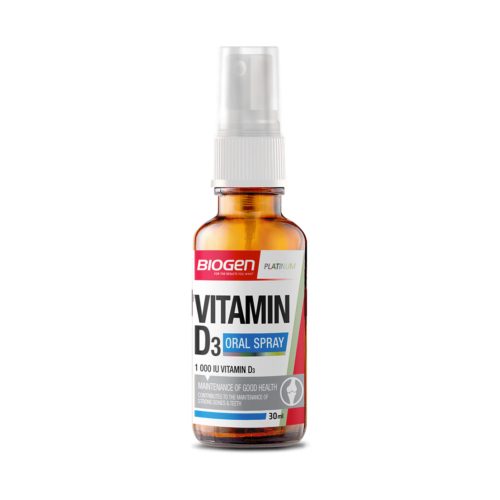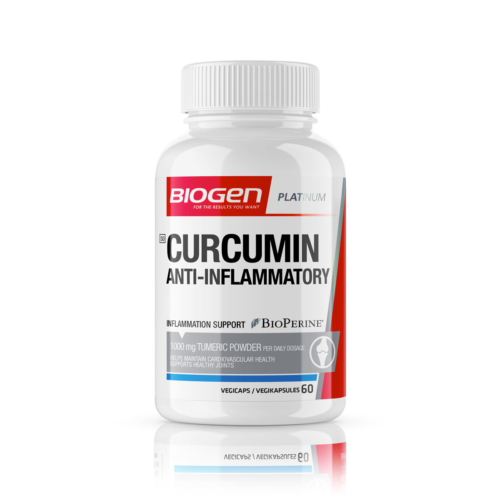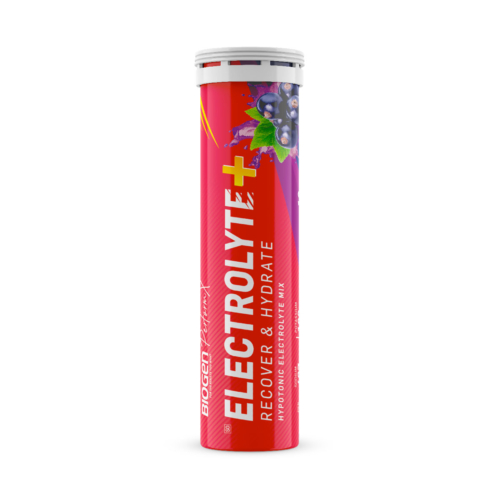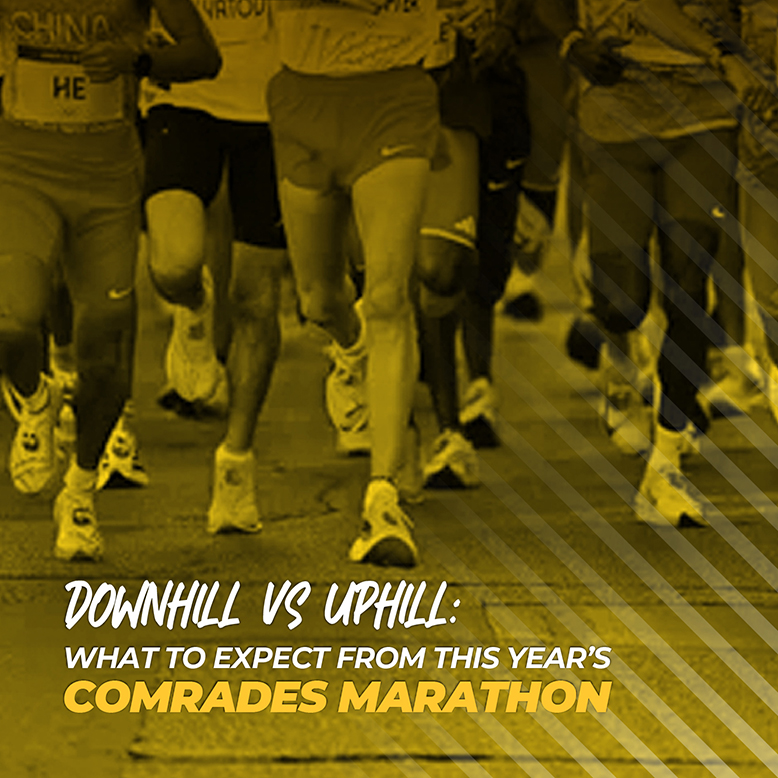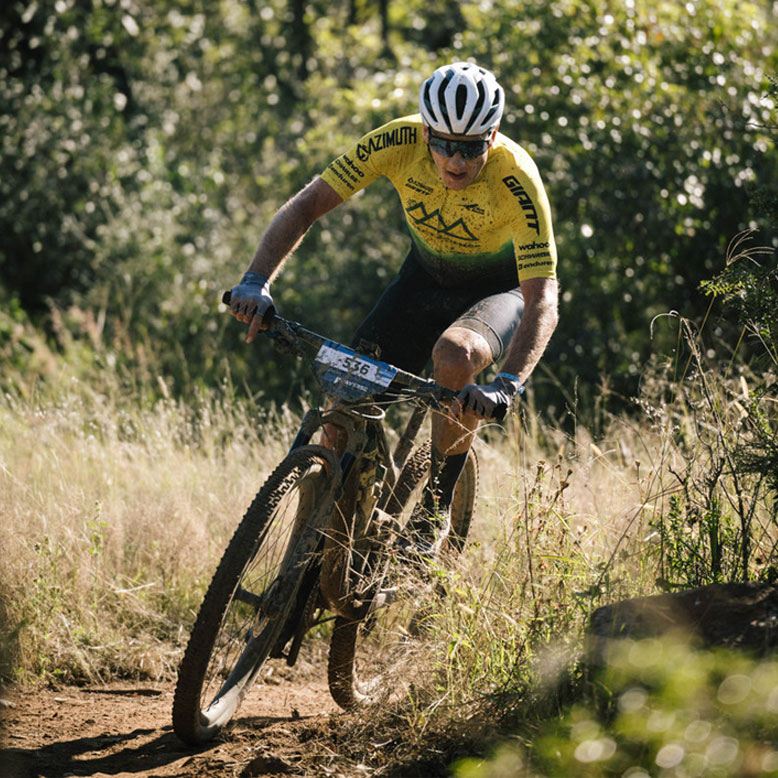
The Comrades Marathon route is brutal, but the down run from Pietermaritzburg to Durban metes out punishment of a different kind compared to the up run.
On paper, calling the race a down run would suggest it is somewhat easier than traversing the same distance in the opposite direction, where runners experience a net gain in elevation.
However, the down run route still includes around 1200m of elevation gain, predominately in the first 50km of the race. The race then drops down to Durban, with a net elevation loss of about 800m from start to finish.
Why your body hurts so much
While the distance of the race and the amount of time runners spend on their feet on the day all contribute to muscle fatigue, no matter the race direction, the down run route profile means athletes may find the going relatively easier on race day compared to the more challenging up run route.
The sustained time spent running down the long hills on the course imposes even more biomechanical stress on the muscles and connective tissues due to the higher impact forces, longer stride length, and the way the muscles contract.
With each stride, the body experiences a higher level of ground reaction force due to the increased speed and the effects of gravity. And as leg muscles fatigue, they start to lose their ability to absorb and dissipate impact forces efficiently.
More significantly, muscles experience eccentric loading – they lengthen while under tension – when running downhill, especially the quads. This type of muscle contraction puts significant strain on the muscle fibres, leading to microscopic damage to the tissue.
Weak or tiring core and glute muscles can also contribute to a loss in control over movement, especially on the downs, which can place greater stress on the muscles, increasing the risk of damage, and may also shift the stress onto ligaments, tendons, joints or even bones.
The resultant damage to muscle and tendons means finishers can experience significantly more pain and stiffness in the days (and sometimes weeks) following the down run.
The Recovery Process
Fully recovering from the physical toll that a race like the Comrades imposes on your body requires a multi-faceted approach, especially after a down run. Follow this 10-step plan to make a full return to running.
Step 1: Time to recover
Give your body time to recover and heal with sufficient rest and adequate sleep (7-9 hours a night). Avoid walking down stairs or spending too much time on your legs in the first few days after the race to limit additional damage to the affected muscles. Widely available recommendations from coaches and other knowledgeable experts and former athletes in the Comrades community generally recommend two weeks of rest after the race.
Step 2: Go low impact activity
However, rest doesn’t mean a complete lack of movement for those two weeks. You should proactively promote healing with regular low-impact activities that promote blood flow to aid muscle recovery and reduce stiffness by supporting the body’s natural recovery processes.
Combine with these activities with periods when you elevate your legs to improve drainage, or wear compression garments – calf sleeves or leggings – on the days following the race to support the vascular system and further aid recovery.
Step 3: Proper Nutrition
Proper nutrition is vital to support the recovery process in the hours and days after the race. After replenishing carbs after the race, you can reduce your overall carbohydrate intake somewhat as your training load will drop significantly following the race and the end of your training block.
You should consume additional protein from natural sources to support tissue repair and recovery, along with natural fats to support hormone production. Protein – Whey or Plant Protein – and amino acid supplements are particularly beneficial during this period as they help you meet your heightened protein requirements with a convenient and tasty option.
Look at options like Biogen Iso Whey Premium, Biogen Plant Based Protein.
Sipping on an essential amino acid supplement like Biogen Complete 9 Aminos in your water bottle can also support your recovery throughout the day.
Step 4: Check your stats
Monitor your heart rate to gauge your rate of recovery and pick up other potential issues. Measure your resting heart rate (RHR) as soon as you wake up every day, before you get out of bed. A good indication that your recovery is on track is a RHR that starts to trend downwards after a few days. A stubborn or rising RHR could indicate higher recovery demands or illness.
You may also experience reduced heart rate variability (HRV) after the race. This means there’s little difference in your minimum and maximum heart rate while you sleep. Low HRV is usually a sign of increased stress on the body. Improving your HRV would indicate that your recovery is progressing on track.
Step 5: Stay Hydrated
Maintaining optimal hydration is important to support overall recovery as the body requires fluid for many of the reactions that occur during the repair and recovery process. Adding an Electrolyte Effervescent Tab to your morning glass of water is a great way to replenish lost salts, especially in the days following the race.
Step 6: Keep inflammation at bay
Your body will typically experience inflammation as a natural response to the tissue damage. It is important to allow this natural process to continue, which means taking anti-inflammatories is not recommended, unless prescribed by a medical professional.
Instead, give your body the nutrients it needs to regulate the natural inflammatory process with Essential Fatty Acids or a natural inflammation support product like Biogen Curcumin Anti-Inflammatory.
Step 7: Mobility and stretching
When your pain and discomfort levels ease sufficiently, add in some light stretching and mobility exercises to restore healthy movement in joints and surrounding muscles. This will also help you avoid seizing up due to prolonged inactivity after weeks and months of regular exercise.
You can support your joint health and possibly accelerate recovery in your joints and connective tissues with a joint support formula like Biogen Joint Care.
Step 8: Immune Support
Support your immune system as it is the primary driver of the recovery process after such widespread systemic damage. The higher demands due to the physical damage can make you more susceptible to infections and illness in the days and weeks after a race.
An immunity support supplement can help provide the nutrients your body needs, which you typically require in excess amounts due to the higher nutritional demands from the repair and recovery processes underway. An ideal option is Biogen Immuno Boost – available in either Capsules, Powder, or Fizzy Extra Strength Effervescent Tabs.
Adequate Vitamin D levels are also crucial for a strong adaptive immune system, with options from Biogen available in capsules or Sublingual Spray.
Step 9: Reintroducing activity
Once all residual pain subsides, you can gradually start to reintroduce activity when you feel ready (or simply motivated) to start running again.
A reverse taper is a sensible way to ramp up your running in a controlled manner to ensure you do not overstress your body, without losing too much fitness. A reverse taper simply follows the 2-3 week taper you used to arrive at the start line feeling fresh and fully recovered.
It is also the ideal opportunity to incorporate more strength training that targets the affected muscles to rebuild muscle strength and improve overall stability. Cross-training activities that don’t involve eccentric loading can also help you maintain fitness while reducing strain on the affected muscles.
Step 10: Mental wellness
And don’t forget to give your mental state some attention, because the post-race blues are real and can affect everyone from recreational runners to elite athletes. After months spent preparing, the euphoria of crossing the finish line and achieving your goal on the big day can soon give way to anxiety and in some instances, depression.
This is often more prevalent in people who participate in one large event a year, like Comrades, and then do nothing for the rest of the year. It is important to acknowledge these feelings, and to remember that it is totally normal to feel this way. Understand that dealing with any feeling of loss, emptiness or lack of direction is actually a healthy and necessary step in the process following big events.
The important thing is that you deal with it. Sitting around waiting for post-event depression to go away could lead to a more serious chronic depressive state.
Tips to deal with post-event depression:
- Prepare yourself: Know that it is going to happen. Accept it and make sure you know what to do.
- Relive the experience: Review photos, video or accounts of the big day to relive the experience. This can help to lift your spirits and reminds you of what you’ve accomplished.
- Set new goals: Merely having another goal on the horizon can give your training and efforts more meaning directly after the attainment of a big goal.
- Set yourself goals that aren’t sport related: Working toward achieving a work or personal goal can be just as rewarding and can give your body the time it needs to recover while appeasing your mental and emotional needs.
Listen to your body
Ultimately, everyone will recover at a difference rate, and the severity of the muscle damage and individual differences can influence the recovery process and how long it takes to bounce back.
So listen to your body and stay attentive to any signs of persistent fatigue, pain, or injury during the recovery period. When you start training again, avoid the temptation to push too hard too soon.
If you continue to experience pain, have a specific injury concern, or suffer from chronic fatigue, it’s always recommended to consult with a healthcare professional or a sports medicine specialist for personalised advice and guidance.


